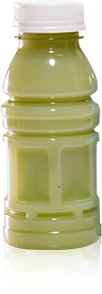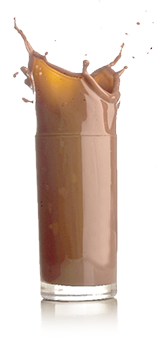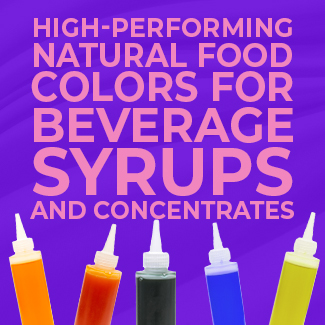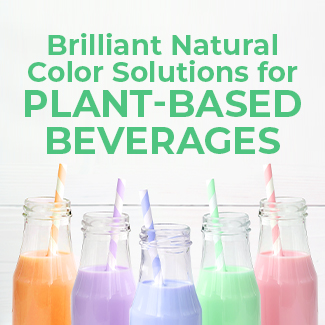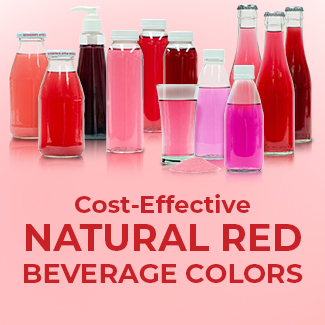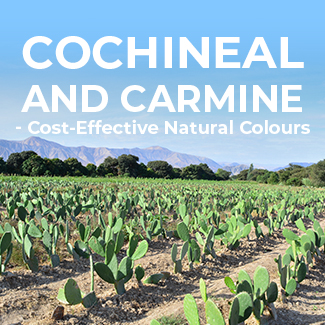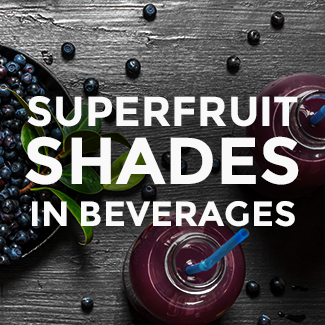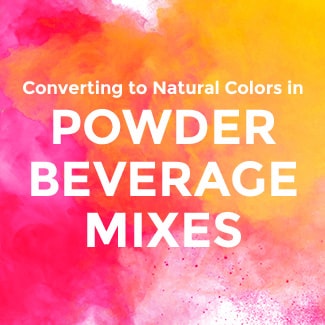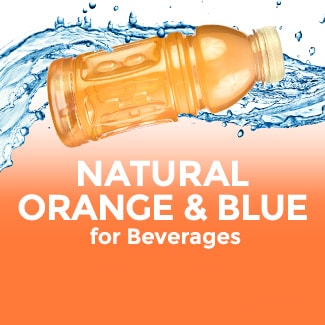Natural Colors for Plant-Based Dairy Alternatives
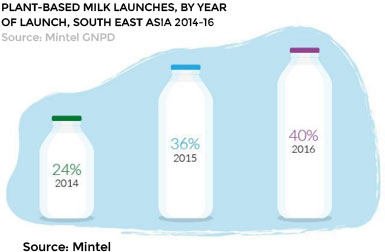 The popularity of plant-based milks, and in particular soy-milk, within South East Asia is not new; indeed, the tradition of drinking non-dairy alternatives is well established and often an integral part to many peoples’ diets in the region.
The popularity of plant-based milks, and in particular soy-milk, within South East Asia is not new; indeed, the tradition of drinking non-dairy alternatives is well established and often an integral part to many peoples’ diets in the region.
This fact is also reflected in the number of new product launches of plant-based milks (which includes soy, rice, nut, grain and seed milks) within South East Asia, which increased by 12% between 2015 and 2016. While new product introductions of soy-milk continue to dominate, there have also been launches of other non-dairy milks made from almond, sesame, rice, coconut, oats and cashew. While still niche, these introductions suggest that consumers are being exposed to a wider range of other plant-based milks besides soy and may begin to broaden their repertoire.
The success of the plant-based milk category stems greatly from products offering a dairy-free alternative without any compromise on taste.
While soy-milk is not new within the region, some other plant-based milks like almond or cashew maybe slightly less familiar for some. In order to overcome this barrier, brands should consider blending the drinks with other milks and/or incorporating flavors.
The Correlation between Taste and Color
A 2017 Sensient study conducted with 1,632 consumers showed a clear positive correlation between color shade vibrancy and taste expectations. In our research, brighter colors lifted purchase intent scores by almost 6% across eight different products; this type of difference could mean tens of millions of dollars in larger categories. Since taste expectation is primarily driven by visual appeal, food color from botanical sources can play a prominent role in plant-based milks, while also maintaining a clean ingredient list.
Natural Color is a great way to bring new, exciting flavors to life, and the shade possibilities are nearly endless. While formulating with natural color, there is generally more complexity, but a solution is almost always available. Color from fruits and vegetables can offer plant-based milk brands a competitive and bright advantage.

Natural Color Strategies for Plant-Based Milks
The base of many plant-based milks is typically not a white shade like a traditional dairy milk, but rather more of a beige or yellowish hue. When formulating with natural colors, it’s critical to keep this base shade in mind, because it will impact your end target color. For example, if your desired end shade is a kiwi green, a vivid yellow like turmeric would be necessary to brighten the base shade and then a natural blue component would be able to get you to the green. With Sensient’s pH and heat-stable, blue vegetable juice, our color experts can create very unique green shades like kiwi or pistachio, as well as blueberry shades and deep purples fruit colors.
The fat content in a plant-based beverage can also affect target shade. Generally, the more fat content, the beiger the base shade. A common oversight with this challenge is increasing the usage rate to offset the darker base shade. However, higher usages have the potential to create other problems, such as flavor off-notes and texture issues. The ideal solution for nut, soy, and rice milks high in fat content are highly concentrated natural colors like Sensient’s SupraRed™ or carmine. The innovative natural color technology of SupraRed and our carmine liquid colors deliver beautiful strawberry, bold cherry, and pink guava shades at lower usage rates, also suitable for UHT applications.Plant-based milk innovation through natural colors

Wild Strawberry
Simple blend of pH-stable natural blue and red like carmine of SupraRed, Suitable for SSL, UHT Flavors and Colors



